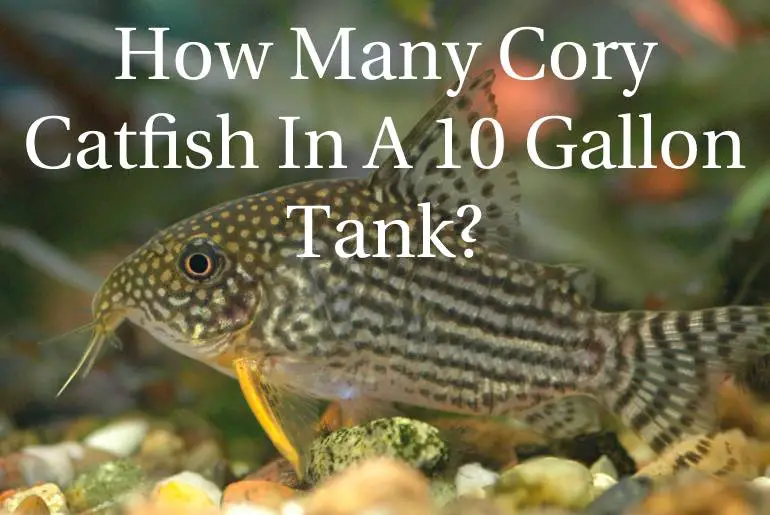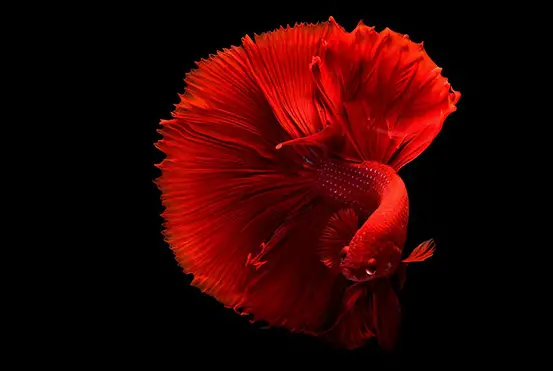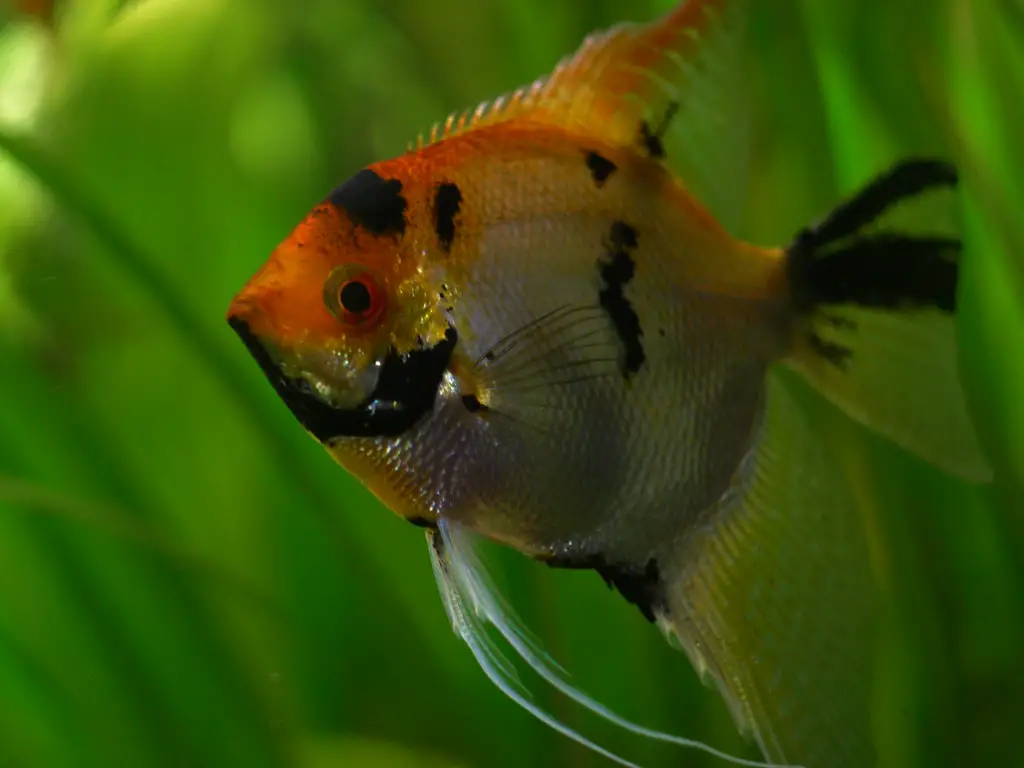Cory Catfish are the first choice of all the fish buyers in a fish shop, why? These fish are not only rich in color but are comparatively smaller than other fish in shops so why not? Similarly, they are fond of food and of swimming in freshwater within their circle. The amazing thing is, like humans, they are social beings too. But how many of them should you keep? How Many Cory Catfish In A 10 Gallon Tank?
| Cory Catfish Types | Size | Number of fish in 10 gallon |
| Skunk Corydoras | 3 inches | 4 to 6 |
| Albino Corydoras | 3 inches | 4 to 6 |
| Pygmy Corydoras | 1 inches | 6-8 |
| Dwarf Corydoras | 2 inches | 5-6 |
| Bronze Corydoras | 2.5 inches | 5-6 |
| Sterba’s Corydoras | 2.5 inches to 3 inches | 5-6 |
| Julii Corydoras | 2.5 to 3 inches | 5-6 |
| Threestripe Corydoras | 2.5 inches | 5-6 |
| Emerald Corydoras | 3 inches | 4-6 |
| Panda Corydoras | 2 inches | 5-6 |
However, Cory Catfish should be kept with small-medium temperament fish who are never aggressive and territorial in the tank. It might sound funny fish being dominant in a 10-gallon tank but this has happened to me. So it is not impossible. That is why, know your fish and their traits before you house them with your Corydoras.
Cory Catfish Are Shy!
Cory catfish are popularly known as Corydoras and Cory Cats. These fish are famous among pet stores and I will tell you why! These bottom dwellers have little whiskers on their face which is pure and gorgeous. Also, their beautiful colorful fins, cute size, and polka dot patterns will instantly gravitate you towards them. I mean they were born to stand out!
Another thing is Cory Catfish loves schooling with each other. They love being in a group and their behavior immediately changes as you add more fish of these species to your tank. That is why a group of 6-7 Cory Catfish is recommended in a 10-gallon tank. But if you want more of these fish then, you can start planning to upgrade your tank to 20 or 30 gallons.
Furthermore, Cory Catfish love food but they are too shy to ask. Meaning, they love eating food as much as they can but if you mix these species with others then the chance is they will avoid the food a lot of time. Having said that, female fish are shyer than male fish. Also, females are nice and plump with eggs while male fish are a bit more slender.
To sum up, Cory Catfish are easy to care for and are small in size with variations in color which totally depends on their types but yes, they have charming personalities overall. Similarly, their love for food and the group of their species is real in whatever tank size they will be in.
What Is The Ideal Tank Size For Cory Catfish?
There is no such thing as an ideal tank size. Yet for Cory Catfish the tank size depends on what aquarium environment you are planning to give them. Averagely, these fish will grow up to 2.5 or 3 inches long for the baby fish and up to 4 inches long for an adult.
Following that, Cory catfish can survive by starting from a 5-gallon tank to whatever size you want to. But do you want them to just survive? No, right? As the general rule is one inch of fish requires a minimum of 2 gallons of the tank. And considering their love for schooling at least 10 gallons of the tank is recommended for a starter.
Likewise, even if you are keeping Cory fish in a 10 gallon presently shortly larger fish tanks are suggested. Because they are a breeding machine their bloodline is supposedly weak and they need an established tank with a spacious, natural, and decorated environment.
However, despite the size of the tank, you can utilize the 10 gallons by planting some live plants while adding some volcano rocks. And, adjusting their water parameters to maintain the water quality so that you will be able to give them the exact larger tank vibes or maybe natural pond vibes.
Can You Keep Cory Catfish In A 10 Gallon Tank?
There are more than 100 species of Cory Catfish with variations in colors, size, body shape, eating habits, and water parameters. But together they are substrate dwellers, they love food and they are schooling fish who need 5-6 fish of their kind to stay mentally cheerful in a captive environment.
However, they are easy species so adding them in an established tank with non-threatening fish won’t be a problem. But if you want a tank full of Corydoras then 10 gallons is a good start. With proper filter installation, planting live plants or lucky bamboo then, adding some hiding spots will help your Corydoras feel more home.
Therefore, yes, you can keep Corydoras in a 10-gallon tank nonetheless you need to plan for a bigger tank for the future too because bigger is always better.
How Many Cory Catfish In A 10 Gallon Tank?
As I mentioned earlier, there are more than 100 species within Cory Catfish but they can be differentiated with their size and body shape visibly. I have enlisted 10 Corydoras that can perfectly fit in your 10-gallon tank without any problem below:
Skunk Cory Catfish
The first one is, Skunk Corys. This fish does not like to stay because that will depress them. Besides, these fish also like to hide and search for food in the substrate so adding caves and small pebbles will make your tank happy and more natural. Similarly, these fish are friendly and will grow up to 3 inches long as an adult so the tank size requirement for this fish is a minimum of 10 gallons.
Albino Cory Catfish
Thereafter, there is Albino Catfish, the cheapest and easily found fish. These fish will search for friends and enjoy hiding. Also, these fish grow up to 2.5 inches long so these fish will perfectly fit in your 10-gallon tank.
Lastly, these fish are substrate dwellers who might eat algae occasionally but this does not mean they will eat algae anytime so please feed them well.
Pygmy Cory Catfish
Pygmy Corydoras is a beginner fish, meaning anyone who does not have much experience in fish keeping can start with Pygmy Corydoras. These fish will grow up to 1 inch long in their 3 years of life span.
Hence, they are a freshwater species that loves sand and hiding spots in a captive environment as their original habitat is full of it. Likewise, these fish are peace-loving fish that will never create chaos inside the tank.
Dwarf Cory Catfish
Thirdly, the Cory Catfish that perfectly fits your 10-gallon tank would be Dwarf Cory Catfish. These dwarf fish are surprisingly famous among buyers worldwide for almost a decade now. Likewise, these fish are not sold for just one purpose, they are sold as a worker, scavenger, and sometimes it is out of fishkeeping interest/hobby.
Moreover, these fish grow up to 2 inches long with 3 years of lifespan. A bit sad but is a great deal right?
Bronze Cory Catfish
Due to its attractive body shape and coloration, the Bronze Corydoras is famous among the fishkeepers be it the beginner or the established keeper. The body surface appears to be greenish, the exact reason why these fish are also known as green Corydoras.
Similarly, these fish grow up to 6 inches long as adult fish so, your 10 gallons of the tank will work perfectly for them. Other than that, Bronze Corydoras live up to 5 years in a captive environment and up to 10 years in a natural environment.
Sterba’s Cory Catfish/ Sterbai Corydoras
This one is my favorite! Sterba Corydoras due to its gorgeous and focused markings all over the body this fish is widely chosen by fishkeepers in the United States Of America. I would recommend them to beginner fish because they are very easy to take care of. Furthermore, these fish tend to grow only 2 or 2.5 inches at their maximum level.
Hence, they hide a lot and are a bit more expensive than other Corydoras but they are a great substrate cleaner. And they live from between 10 to 14years so your money is safe.
Julii Cory Catfish
Julii Corydoras also known as Leopard Corydoras are a unique fish because of their skin resemblance with Leopard’s skin texture. These beautiful corydoras are natively from fast-flowing rivers from Brazil. Similarly, these fish do not grow into large sizes and grow into just 2 inches long which makes them suitable for small tanks.
To sum up, Julii can live up to 5 years in a captive environment and up to 8 or even 10 years in their natural environment.
Three Stripe Cory Catfish
On the contrary, Three stripes Cory Catfish look-alike like Julii Corydoras because of the same color combination and the texture of the skin. The immediate difference you can spot between these fish is the pointed snout and their growth structure. Julii Corydoras grows longer than Three stripe Corydoras and has more pointed snout than Three Stripe Corydoras.
At last, Three Stripe Corydoras averagely live up to 5 years and are playful fish. You can watch them swimming in your bad mood with a great mood ending. Trust me on this one.
Emerald Cory Catfish
Emerald Corydoras are also known as Emerald green Cory have both pink and green body colors. These fish are peaceful fish growing up to 3 inches as the maximum size. And, are a serious scavenger when hungry.
Similarly, these fish being omnivorous live up to 13-14 years in a properly maintained aquarium. Also, they are a very easy-to-care fish even for beginners.
Panda Cory Catfish
Lastly, the Cory fish that will go in your limited space (10 gallons) must be Panda Corydoras. These fish are of utmost social fish who need a group of at least 4, grow only up to 2 inches. One of the reasons for their insane popularity.
Additionally, Panda Cory will give a perfect and close resemblance to a real-life panda. These fish have three major black markings in their body, one in their eyes, another in dorsal fins, and the last one in their tail.
Also, I recommend you to provide them with good water quality as they originate from a colder water region in tropical regions. It is important for them to feel closest to their home.
Hence, they will be long-lived for you as long as you will be providing them with enough food. And, they can be a good addition to a smaller aquarium.
Small Tip: All these Corydoras need a be in a group of 5-6 to thrive in your tank. Also, they are a passionate worm eater be it frozen or live worms, Happy feeding!
Tank Condition For Cory Catfish In A 10 Gallon tank
Cory Catfish is a tropical fish originally belonging to the small lakes in South America where the water movement is comparatively slow. Similarly, the water in these lakes is clean and warm with natural plants and natural rocks everywhere. So, if you want to keep these fishes in your tank try to give them a close resemblance to their natural habitat.
Moreover, even with the 10 gallons tank remember you can recreate the whole wild inside. Cory Catfish being a substrate dweller, keeping soft-sediment down there to prevent them from any injuries is a necessity. That is why Soft rocks, sponges, sand, and small round pebbles are advised to keep.
Note: Do not place the sharp object inside.
Furthermore, Cory Catfish love warm and hard water. So, the water temperature must be adjusted between 72 degrees to 80 degrees depending on the species. If you want to add a new Cory fish to your established tank then, adjust the temperature by looking at your room temperature or wherever you live in.
Besides, PH level is advised to keep between 6.8 to 8.7 PH level. But this also depends on the water quality of the area you live in. If you are using tap water then check the PH level and adjust the water level thereafter.
Thus, Cory Catfish are hardy fish so look out for the water quality and keep the temperature a little higher to give them a comfortable environment and help them in the breeding process.
What Fish Can Live With Cory Catfish?
Considering the tank size which is 10 gallon only a few and sociable fish of Cory Catfish can go together in the same tank which is listed below:
- Otocinclus Catfish
- Tetras
- Swordtails
- Betta
- Guppies
- Amano Shrimp
- Cherry Shrimp
- Mollies
- Ghost Shrimp
- Pygmy Corydoras
- Harlequin Rasbora
- Honey Gourami
- Zebra Danio
- Otocinclus Catfish and
- Platy
FAQs (Frequently Asked Question On Cory Catfish)
Quick 5 Amazing Facts On Cory Catfish
I have enlisted 5 facts that might be useful to a beginner keeper and fish enthusiasts which are listed below
| Facts | Description |
| Color | The Cory catfish have charismatic different colors, sizes, patterns, and fins structure depending on their origin. |
| Care Level | As Cory fish will eat absolutely anything and can survive in any hardy water these fish are easy to take care of |
| Breed | Within 3-5 days to hatch depending on the water quality, temperature, and their species. So, saying 15 eggs a time would be safe. But, remember to separate adult Cora fish with eggs else they will eat them all |
| Teeth | An adult Cory Catfish do not have teeth at all, not even one! They leave their baby teeth at around 1 year after that, they grow with no teeth |
| Lifespan | Well, the last Cory fish I had lived up to 5.5 years but normally they live up to 3 years in a captive environment and sometimes 5 if you have taken care of every affecting factor |
Do Cory Catfish Clean The Tank?
Cory Catfish are known as bottom feeders that make them magnificent bottom cleaner but only food cleaner. They will not wipe algae off or reduce the nitrates level from your tank but they will prevent the growth of algae by consuming the remaining food scraps in the tank.
As scavengers and omnivores, these fish will scavenge down the substrate in search of eating leftover food and will sometimes enjoy their time scrapping more food now and then.
Can Cory Catfish Kill Other Fish?
I cannot imagine Cory fish being a threat to the fish leave killing the fish apart. They grow up to 4 inches long as an adult which is still tiny compared to other aquatic species so killing fish is impossible. They might become territorial with smaller fish than them, even so, Cory Catfish and murdering do not go in the same frame together.
Therefore, No, Cory Catfish cannot and will not kill other fish.
Do Cory Catfish Need An Air Pump?
An air pump can come in handy but do your Cory Catfish need it? Probably not. These fish know exactly when they need air so they will come to the surface for a gulp of air.
Similarly, In general, Cory Catfish belongs to those species that do not need high enrichment in oxygen. As they absorb oxygen from the atmosphere whenever they need more. They can live without oxygen because of the labyrinth present in them.
However, this all depends on their origin of species where some Cory Catfish do not need oxygen for a while to survive at all and some Cory catfish need a certain amount of or more amount of dissolved oxygen to survive in a captive environment. These fish are not provided with enough oxygen even in the wild.
How Many Cory Catfish Per Gallon?
The general rule of thumb is 2 gallons of the tank for an inch-long fish and the same implies the Cory Catfish category. For a 10 gallon tank, you can keep 5-6 fish together and you can add up to 10-12 Cory fish in the 20-gallon tank and so on.
Hence, You can keep as much Cory fish together as long as you are providing them with the right water quality, a good amount of dissolved oxygen, and a good diet altogether. If all these factors are rightly put your tank is Cory fish ready.
Is Cory Catfish Social?
Yes, Cory Catfish is an extremely social species having a peaceful, calm, and non-aggressive temperament. They become visibly happy when in the group so adding more fish or allowing the same species in the tank is always recommended.
Having said that, Cory fish glow differently with their specific species but this does not mean they become ignorant of other species. They love swimming around in a group of whatever species and they are equally sociable with all aquatic fishes as long as they won’t be harmed or kill them.
Final Thoughts
Cory Catfish is a great choice and you do know this by now. These social fish won’t disappoint you and will exceed your expectation of having a cheerful, active, and happy tank.
Lastly, if you are a beginner in the fishkeeping world who wants to have fish but does not have a clear idea of where to start then you can check the link below. This might be helpful for you.
Recommended Articles:
10 Best Freshwater Fish For Those New To Fishkeeping | Beginners Guide
Beginners Guide To Installing Freshwater Sump Filter And Media To Add-In
Fish Food 101: A Beginner’s Guide On How To Feed Aquarium Fish
A Complete Beginner Guide to Killifish: Care, Breeding, Lifespan, Diet






